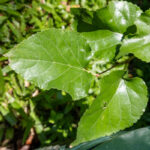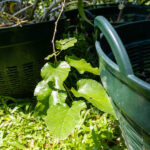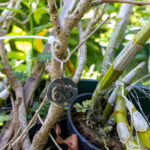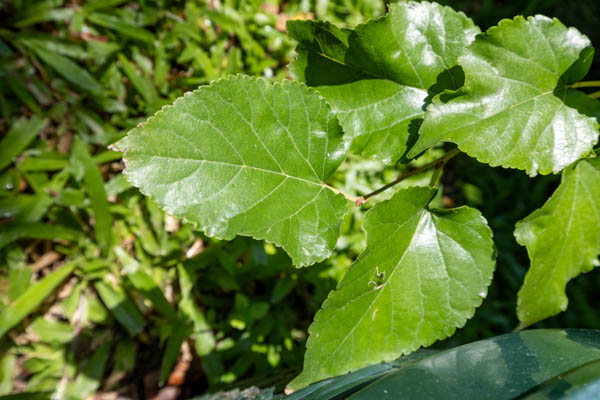หม่อน (Mon) / White Mulberry
Family: Moraceae
Morus alba, known in Thai as หม่อน, is a small deciduous tree cultivated throughout Thailand. It is best known for its nutritious fruit and medicinal leaves, traditionally brewed as a health-promoting tea.
Botanical Characteristics
The mulberry tree grows 3–10 meters tall with rough bark and broad, serrated leaves that are bright green and glossy. It produces small white flowers followed by clusters of purple or red edible berries. The tree is resilient and grows well in tropical and subtropical climates.
Use in Thai Traditional Medicine
Mulberry leaves are commonly dried and used to make herbal tea believed to nourish the blood, lower cholesterol, and regulate blood sugar levels. The leaves are also used to relieve dizziness, promote clear eyesight, and cool internal heat. The fruit is mildly sweet and supports digestion and energy balance.
Medicinal Compounds
Rich in flavonoids, anthocyanins, and polyphenols that exhibit antioxidant, anti-diabetic, and cardiovascular-protective properties. The leaves also contain alkaloids that may help inhibit carbohydrate absorption and support healthy glucose metabolism.
Culinary Uses
Mulberry fruits are eaten fresh or used in jams and desserts. The leaves are steeped as a caffeine-free tea, often combined with other herbs for a calming and cleansing beverage.
Cultivation Notes
Morus alba thrives in well-drained soil with full sunlight. It can be propagated from cuttings and grows rapidly with regular pruning. The tree is often cultivated in Thai herbal gardens both for medicinal and silkworm-feeding purposes.
Disclaimer: This information is provided for educational and historical purposes only. It is not intended as medical advice. Always consult a qualified healthcare professional before using any herbal preparation.




